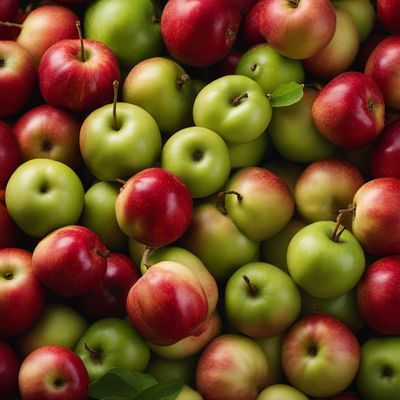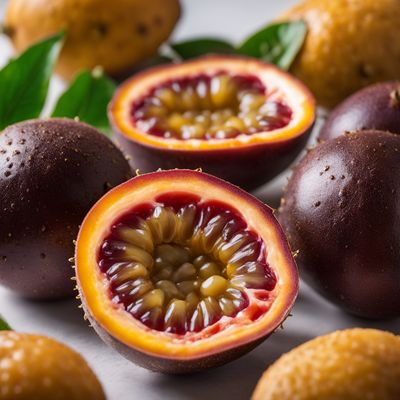
Ingredient
Miscellaneous fruits with inedible peel, small
Petite Gems: Exploring the World of Small Fruits with Inedible Peel
These petite fruits, often no larger than a cherry, boast vibrant colors and a firm texture. Their inedible peel protects the delicate flesh inside, which can range from juicy and sweet to tart and tangy. Despite their small size, these fruits pack a punch of flavor and can add a burst of freshness to both sweet and savory dishes. Their appearance varies depending on the specific fruit, with hues ranging from deep reds and purples to bright yellows and oranges.
Origins and history
The origins of these small fruits can be traced back to various regions around the world. Many of them have been cultivated for centuries, with their historical significance intertwined with the cultures that embraced them. These fruits have played a role in traditional cuisines, medicinal practices, and even folklore, making them an integral part of different societies.
Nutritional information
Packed with essential vitamins, minerals, and antioxidants, these small fruits provide a nutritious boost to any diet. They are low in calories and high in fiber, making them a healthy snack option.
How to select
When selecting these small fruits, look for ones that are plump, firm, and free from blemishes or bruises. The color should be vibrant and consistent, indicating ripeness. Avoid fruits that are overly soft or have a dull appearance.
Storage recommendations
To maintain the freshness and quality of these small fruits, store them in a cool, dry place or in the refrigerator. If they are ripe, consume them within a few days to enjoy their optimal flavor.
How to produce
While these small fruits are typically grown commercially, they can also be cultivated in home gardens or containers. Research the specific fruit you wish to grow and follow the recommended planting and care instructions, ensuring the right soil conditions, sunlight exposure, and watering regimen.
Preparation tips
These small fruits can be enjoyed as a snack on their own or incorporated into a variety of dishes. They can be used in salads, desserts, jams, or sauces. To remove the inedible peel, simply cut the fruit in half and gently scoop out the flesh with a spoon. Alternatively, some varieties can be peeled using a knife or peeler.
Culinary uses
These small fruits are versatile and can be used in both sweet and savory dishes. They can be added to fruit salads, used as toppings for yogurt or ice cream, or incorporated into pies, tarts, and cakes. They also pair well with savory ingredients in salads, salsas, or marinades.
Availability
These small fruits are commonly available in various regions around the world, including North America, Europe, and Asia.
More ingredients from this category

Star apples and similar-
Exotic Delights: Exploring Star Apples

American persimmons and similar-
The Autumn's Golden Gems

Litchis and similar-
Exotic Delights: Exploring the World of Litchis

Kiwi fruits and similar-
The Vibrant Delights of Exotic Fuzzy Fruits

Passionfruits and similar-
The Tropical Treasure

Other Miscellaneous fruits with inedible peel, small
Petite Gems: Exploring the World of Small Fruits with Inedible Peel

Prickly pears and similar-
Exotic Delights: Unveiling the World of Prickly Pears